In a growing industry ripe with opportunity, women and women of color face both hindrances and possibilities. The global insurance industry is projected to grow 9% a year on an average annual return basis between 2023 and 2026, while the global medical professional liability (MPL) insurance segment is projected to grow by 10.8% a year on a compound annual growth rate between 2022 and 2031.
Nearly 3 million people are employed in the insurance industry, with 686,300 employed in the property and casualty sector, which includes the MPL subsector. While women compose a majority of entry level insurance professionals, they are less well represented in the C-suite and board room. In late 2020, nearly a quarter of executives and officers in publicly-traded insurers were women, and there were a total of seven female CEOs.
For women of color, only 1 in 20 senior vice presidents are women of color, while only 1 in 35 C-Suite members are women of color. Nearly 60% of the employees in the insurance industry in 2022 were women, with employment concentrated in claims, policy processing, underwriting, and sales.
At the current rate of promotion, the industry will achieve gender equity in management and the executive suite in approximately 30 years.
That being said, the outlook for women and women of color in insurance is brighter than ever. Not only are there a wide variety of roles available, but there are many opportunities for hybrid and remote work, due to the nature of insurance jobs. In addition, the industry as a whole is hiring, with two-thirds of carriers planning to increase headcount. Within the MPL sector, job opportunities are available in underwriting, customer service, claims, actuary, brokerages, finance, marketing, data analytics, human resources, legal, communications, sales, and more.
To gain insight into the challenges and opportunities for women in insurance, Inside Medical Liability Online interviewed six women who are employed in the MPL insurance sector:
- Jenelle Arnao, Senior Risk Consultant, Risk Management and Analytics, Coverys
- Nichole Davies, Senior Broker, BMS Group
- Tonya Davies, Chief Operating Officer, Professional Risk Management Services
- Gloria Everett, President and CEO, The Mutual RRG, Inc.
- Megan McIntyre, Senior Vice President, Transatlantic Reinsurance
- Stella Moeller, Senior Vice President, Underwriting, Physicians Insurance
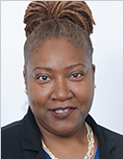
Jenelle Arnao
|
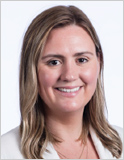
Nichole Davies
|
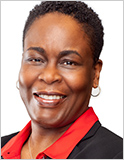
Tonya Davies
|
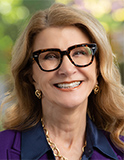
Gloria Everett
|
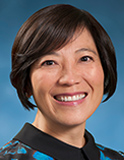
Stella Moeller
|
Evolving the Industry
Everett began her career in healthcare when many women still chose to get married and stay at home. Defying those stereotypes, she entered the workforce and stayed there in a time when there were very few women in senior positions. “There was a real glass ceiling,” she recalled. “You didn’t see women as hospital administrators or CEOs; pretty much the best a woman could do was rise to the level of director of nursing.” When she began her career in the MPL industry, there were more women; however, men still dominated in the boardroom and C-Suite, except for the head of human resources.
“For a long time, Denise Funk [former CEO at CMIC Group now Integris Group] and I were the only two female CEOs, in the MPL industry,” she continued. “I was thrilled when I started seeing more female CEOs come into the MPL Association, which was then the PIAA. I felt welcomed. All my mentors were men, which was surprising, given the times.”
Nichole Davies, who now lives in London, UK, grew up in the United States with her father in the insurance industry. While she never intended to go into insurance—the opposite, in fact, she ended up in the industry and has enjoyed the benefits offered, including mandated maternity leave in the UK. “As a kid, I saw the insurance culture from my Dad’s point of view—be in the office all the time, work all the time,” she recalled. “The only women at events were the wives of his colleagues.”
By the time Nichole Davies entered the industry, things were changing. “Some of the conversations about women in insurance were already occurring,” she said. “When I first started, a lot of times I was the only woman in the room. There were women, but they were assistants or worked on the claims side. But that is changing as the industry realizes that what will make one person successful in their job may look completely different to someone else.”
Tonya Davies, who has spent the entirety of her nearly 30-year career in the insurance industry, had a similar experience. “It was predominately a male-dominated industry, and there was very little regard to diversity in regard to the workers and the leaders,” she said. “Along the way, companies began to pay more attention to gender diversity, and now, it’s evolved to pay attention to all diversity. However, women are still very much underrepresented in all levels of leadership, and if you look at women of color, their representation is virtually non-existent.”
Moeller, who began her insurance career in Australia in 1995, related that early in her career, men were in charge. “The underwriters were all men,” she said. “The women, even if they were in a management position, were on the operational side, not on the technical side. When I moved to Hong Kong, with AIG, it was different. The top tier of executives and the person in charge of the office or the region were men, but there were more women in middle management, in underwriting and CIOs [chief information officers].”
When she moved to the US, there was more evolution. “It was an industry that gave women more opportunity,” she added. “Whether on the operational side or the technical side, women were generally fairly compensated. Today, more women in the insurance industry are in middle and higher management, making decisions, and owning their own book of business. The only area that I see as lacking is the C-Suite.”
For McIntyre, who began her career in the US in 1993, raising children and growing her career was very challenging. Over time, technological advancement began to provide some flexibility, easing that challenge to a degree. “Connectivity and the ease of collecting and transmitting data and information has allowed people to work in a non-traditional office environment,” she added. “Post-pandemic, this has become almost necessary and now it’s the new norm.” That means, for insurance and for women, it’s easier to work together.
Creating Inclusive Cultures
To create a truly inclusive culture, Arnao believes that you must support the individuals who are identifying problems and create actions and plans to support these people. “Otherwise, there’s the danger of immediate burnout for anyone who is the chosen person, which is why that doesn’t work,” she said. “Instead, we need folks who are identified as advocates and allies who can support the individuals doing the work in place. Get a team, get a committee to rise up and address the needs.”
At Coverys, Arnao proposed and was given the go-ahead to start a Newcomer Engagement Team within the Risk Management Division, an initiative that helps support newcomers. “Since we started in April 2021, we’ve had nine people come through, which creates a whole higher level of engagement in the onboarding process. Instead of ‘here’s your ID and orientation,’ we support people in a more proactive and intentional way.”
From Nichole Davies’ point of view, the industry needs to do a better job of promoting an inclusive message. “From a recruiting perspective, the industry needs to put it out there that we need all kinds of people to build better organizations,” she said. “Inclusion and diversity creates better solutions because you get different viewpoints, different ideas, and more thoughtful discussions.”
Creating inclusive cultures is all about getting comfortable with being uncomfortable, said Everett. “We’ve all got cognitive biases that create a feeling of comfort when we’re around people who think like us,” she said. “All that does is reinforce our own opinions. To truly elevate your organization, you need diversity of opinion and perspective.”
Research reveals that diversity and inclusion programs work when they meet the following criteria:
- Create a culture based on trust
- Take steps to combat discrimination
- Embrace disparate styles and voices
- Encourage open discussion of the lived experience of identity groups
“Inequality is bad for both business and society,” wrote Robin J. Ely and David A. Thomas in Harvard Business Review. “Organizations limit their capacity for innovation and continuous improvement unless all employees are full participants in the enterprise: fully seen, heard, developed, engaged—and rewarded accordingly. Moreover, such treatment can unleash enormous reserves of leadership potential too long suppressed by systems that perpetuate inequality.”
Successful companies recognize women’s contributions, and they do provide the flexibility to have more work-life balance, when appropriate, Moeller believes. “Some of my colleague have a full-time job at work and a full-time job at home, caregiving in some kind of way, whether that is with children or aging parents or both.”
For Tonya Davies, inclusive and diverse cultures need allyship from men. “Senior leaders need to be intentional about the right talent to sponsor, and sponsor equally for women in the way that some leaders do for men,” she said. “There’s work to be done in overcoming known and unknown biases within organizations. Organizations need to foster a corporate culture that supports not only gender diversity, but ethnic diversity, which is key for women who are black, indigenous, and people of color.”
Another issue is pay, she noted. “Corporate America needs to face the reality of it, that pay equity is crucial,” she added. “Hire young professionals at the same pay because they are all in the same place—coming in to learn and develop. Organizations need to be honest with themselves about the disparities that exist and then make a commitment to do better.”
Identifying Career Paths
Within risk management and insurance in general, career paths are never similar—if you get 10 risk managers in a room, you’ll get 10 stories of how they got there, noted Arnao. “I’d love to see more development in insurance—how can we build up the next generation of risk managers, insurance professionals, claims, underwriting, and so forth,” she continued. “To do that, we need to know more about how to meet the younger generations where they are to become effective mentors, advocates, and allies.”
To succeed in supporting women for advancement in the industry, organizations need to be more proactive in identifying and promoting career paths, Nichole Davies said. “How am I meant to know what a career path looks like?” she asked. “I can’t know what works and what won’t work. You should be providing guidance on my strengths and weaknesses and how I can be the most successful in helping my company. I took on the management coaching course that I’m on because I stepped forward and said I was ready for a promotion.”
“What tends to happen is if you’re good at your job, whether that job is underwriting, claims, brokering, marketing, or whatever it is that you move up the ranks and eventually you become a manager,” she continued. “But what happened along the way is that you didn’t actually learn how it effectively manage people. Instead of automatically moving to that next step, there needs to be more consideration of what your skills are and what is the best role for you.”
Organizations that employ a career-path approach proactively work with their employees to guide them through varied forms of career progression, according the Society for Human Resource Management (SHRM). “A career development path provides employees with an ongoing mechanism to enhance their skills and knowledge that can lead to mastery of their current jobs, promotions, and transfers to new or different positions,” stated a SHRM article, “Developing Employee Career Paths and Ladders.” “Implementing career paths may also have a direct impact on the entire organization by improving morale, career satisfaction, motivation, productivity, and responsiveness in meeting departmental and organizational objectives.”
Research reveals that employees are attracted to opportunities that offer career growth within the company and that will allow them to learn and develop new skills, all hallmarks of career paths. In fact, employees who were employed at the same organization for two years had a 75% likelihood of staying with that same company if they had made an internal move within that company, according to LinkedIn’s 2023 Workplace Learning Report.
Tonya Davies has observed a progression in women’s mindsets in regard to career advancement. “When I first came into the industry, women had a mindset that if we assimilated, kept our heads down, and worked hard, we’d get recognized with promotions,” she said. “We’ve now realized that is not the case. It takes us being vocal about what we want, partnering with our organizations to say where we want to go, and how we can be supported. It takes us building great networks and relationships because it’s not what you know, but who you know, which is very much true in this industry. However, executing on this for women is a lot tougher.”
Finding your own voice as a woman in the insurance industry is key, Moeller noted. “We need to identify what we’re good at and what we want to do and then express the desire and the commitment to get there. Sometimes, as women, we aren’t confident enough. When women voice what we want, we’re sometimes seen as too aggressive.”
McIntyre believes that women excel in many of the diverse skill sets necessary in insurance. “Being analytical in numbers and situations is important,” she said. “To be able to read a room and figure out what’s going on, who’s the decision maker, who isn’t, and having the ability to check your ego at the door is very valuable. Being able to sell and market your product or your viewpoint is important. Finally, organizational skills and thinking strategically are crucial.”
Promoting Leadership
Insurers have an unparalleled opportunity to invest in women in the insurance industry, Tonya Davies believes. “They need to identify women’s skillsets and leverage those skillsets by supporting women where they want to develop and where they want to grow,” she continued. “Companies need to better address gender diversity while addressing intersectionality, but many of us know, despite the best intentions, that it doesn’t happen that way. For women, there are opportunities in this industry to lead. Often, we are not as quick to get out of our comfort zones as men, and we need to run towards the things that make us feel uncomfortable.”
There are many different ways that organizations can encourage women, she added. “They can give women the bandwidth to do different things outside the organization, whether it’s being part of an article like this, speaking on a panel, accessing high profile projects, or helping them build leadership skills.”
For women who want to advance, Everett has some advice. “The best way to advance from my perspective is to be positive and enthusiastic,” she said. “Tell people, especially the leaders you meet, what you liked about their presentation, what resonated with you, then ask to have coffee with them. The more you make a human connection, the more likely it is that people will seek you out for projects, will seek you out for leadership, will remember your name in a positive way.”
“I’m blown away by the number of competent, qualified women coming into our industry right now,” said Everett. “They are superstars, and I’m thrilled that in all aspects, in leading healthcare institutions, MPL insurers, brokerages, and more, we’re seeing women advance into the C-suite in record numbers.”
Paving the Way for Future Generations
For women to flourish in the insurance industry, leadership needs to be mindful of creating a foundation to support women in the future.
“This mindset is similar to a mindset in social work and child welfare that when you educate a woman, you educate a home and a community,” said Arnao. “Research shows that when you teach, educate, or elevate a woman, you elevate a community even if that’s not quantifiable in the moment.”
In today’s insurance industry, there are many opportunities for women. “I believe they can assume any role—they could be the head of underwriting, the head of claims,” Moeller said. “In our company, five of the seven members of the executive team are women. As women, we often look at issues in a unique way, and sometimes offer a different perspective.”
To understand the depth and breadth of opportunities in the insurance industry, college graduates should start with an internship, rotating through each department, Moeller continued, saying, “That way, they can discover which department fits their skill set, and gain an understanding of how each department operates.”
Expanding training programs is one way that insurers can identify and grow next generation talent. “It is every carrier’s responsibility to train the next generation and provide opportunities for them,” Moeller added. “Giving women flexibility and paying them well will keep the pipeline open, because once women find a job that provides fair pay, growth potential, and flexibility, they aren’t likely to leave.”
McIntyre agrees, saying, “Until something changes in medicine, we are still the ones who have to grow and carry future generations. Anything that an employer can do to make the job more manageable with that part of our lives is huge, if that means a greater ability to work remotely, onsite child care, and so on. We don’t need preferential treatment—just more or consistent and sustainable flexibility. And men could use that too.”
Advancing Your Career
To advance your career within the insurance industry, our panel of experts made the following suggestions:
- Nichole Davies: “Say yes to everything. Go to everything you can. The networking and connections you make are so important as you go along and can’t be learned sitting at your desk. You have so much time at the beginning to get out and take advantage of wider opportunities before you get more responsibilities whether that’s having a family or taking care of your parents. Put yourself outside your comfort zone. Try new things. Fall on your face and if you fail early on, it’s so much easier to recover from failure when you’re younger.”
- Tonya Davies: “Building your personal brand is just as important as an organization building its brand. Everything you say and everything you do influences that brand. As an individual, you need to be intentional about what you want to be known for. Build relationships within your organization and outside of the organization within the industry. Don’t leave a conference without making connections with five people you didn’t know before you went to the conference. If you’re on a hybrid schedule or remote, get into the office, because you learn from talking to others. Take on the tasks that are inconvenient for others. If you’re a new underwriter and you’re taking on the more difficult accounts, that’s when you learn the most.”
- Everett: “Number one, always seek out a mentor. Always seek out a network. Always join the trade associations. If it wasn’t for the PIAA, I don’t think I would have gotten access. The networking and education are so important—you have to do it, you have to find the time. When I had kids at home, I would bring my kids with me and bring a nanny. I don’t know how many PIAA meetings I went to with kids and a nanny. You have to invest in your career. If you’re in the MPL industry, then definitely, the MPL Association. Look for another association, such as a women’s leadership association. That would give you leadership skills and industry skills and networks.”
- McIntyre: “When you’re starting out and you don’t have many responsibilities at home, do all you can to be noticed. Raise your hand for every project. Create projects that solve problems or address needs and show your managers what you’re capable of. This is the time to work long hours, when you can, and learn and absorb as much as you can. Jump on that plane on Monday night to take an 8:00 a.m. meeting in Chicago, now, while you can. Because it’s all cumulative, all that you do and the reputation that you build will then carry you through the years when you can’t do those things because of your responsibilities at home.”
- Moeller: “As a person entering this industry, they need to study for professional designations, go to conferences, make friends, and broaden their outlook. They’ll get one view working at a big company like Chubb or AIG, but another different view working at a smaller company. For me, it makes sense to start at a bigger company that has an established training program that will teach them basics in the insurance industry. As they grow in their career, they will become an expert in one area and may very well move to a smaller company to further their career.”